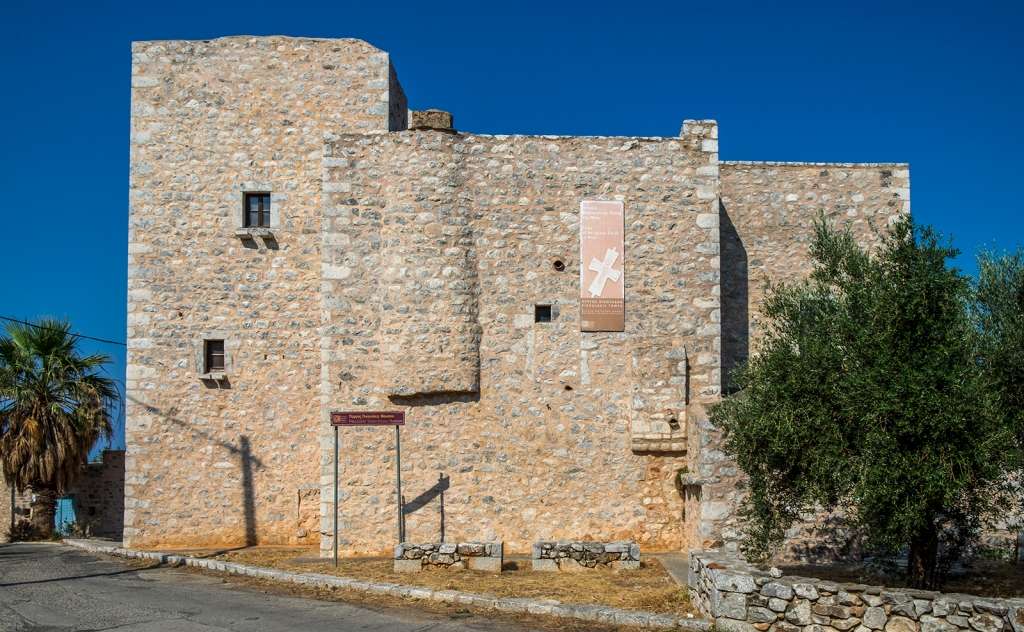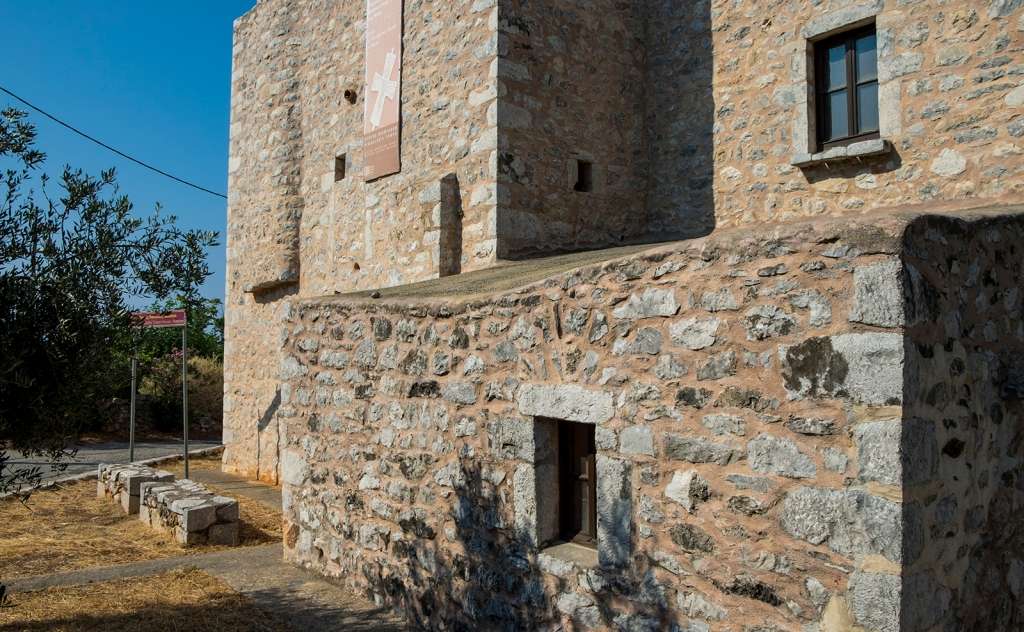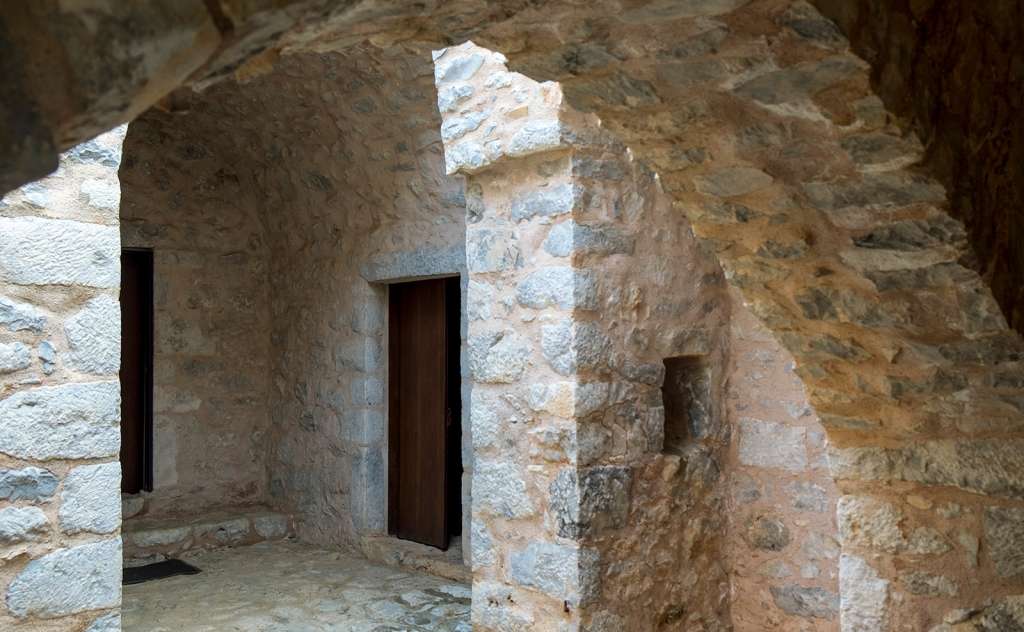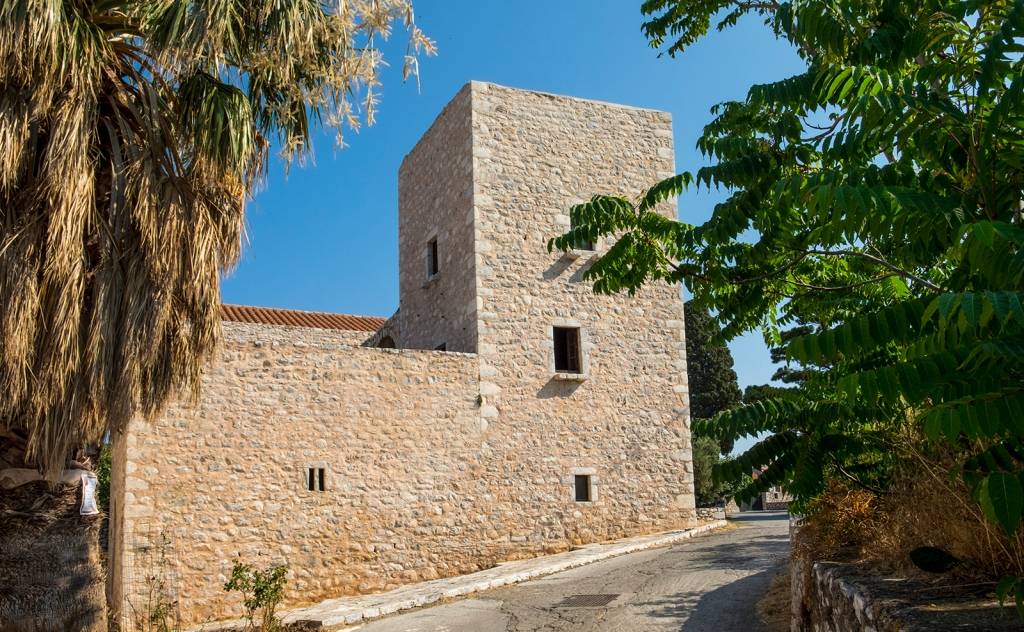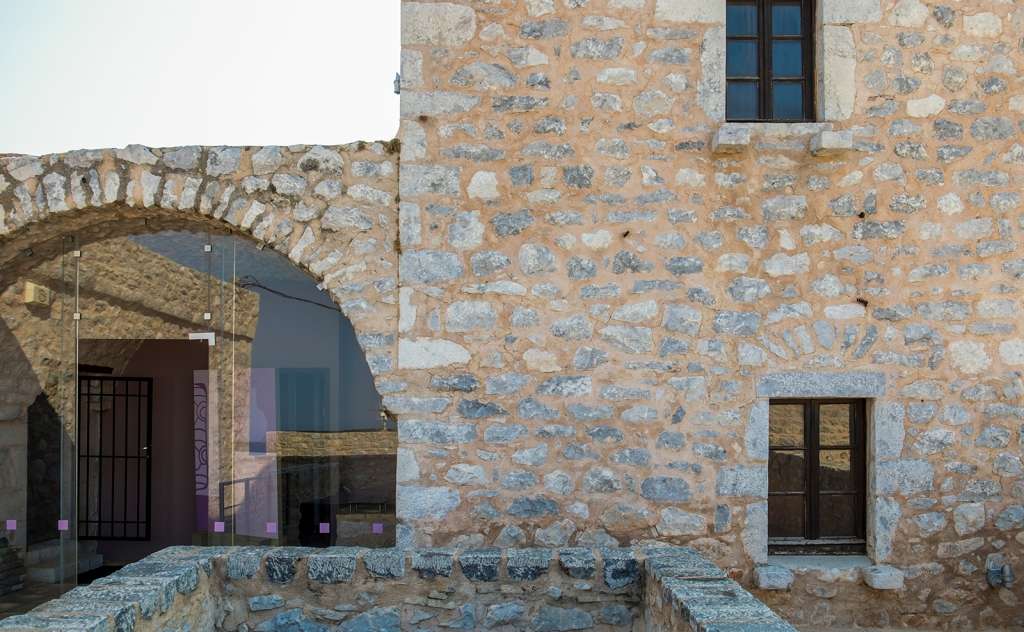Areopolis - Pikoulakis' Tower Byzantine Museum of Mani
The Byzantine Museum of Mani is housed at the Pikoulakis' Tower, at Areopolis, next to the church of Agios Ioannis. It is one of the stations of the "Mani Museum Network". It is a fortified house with a tower and a tower house, which Ioannis Pikoulakis donated to the State. The Tower, a typical example of fortification architecture, was built before 1821, while the tower house was built in 1850.
The permanent exhibition of the Museum is entitled "Stories of the religious faith of Mani" and consists of two sections. On the ground floor, visitors can see the section entitled "Appearance and Establishment of Christianity", which refers to the emergence and gradual spread and consolidation of Christianity in Mani during the Byzantine period (330-1453 AD). The items -ruins found during the excavations are from Early Christian basilicas (5th-6th century) on the coast of Mani, such as Tigani, Gythio and Kyparissos. Visitors can admire items such as marble imposts, glass beads, crosses, and more. Characteristic is the ring with the peacock, which symbolises paradise. Findings from Tigani are part of the permanent miniature collection of the Byzantine and Christian Museum of Athens. The consolidation of Christianity is represented by marble sculptures of medieval Byzantine temples (843-1204 AD). We should note that most Byzantine sculptures (55 marble icons) are preserved in Mani compared to any other region of Greece.
The second section of the exhibition is on the first floor and is entitled: "The Church: a place of worship - a place of communication". This section highlights the main features of the Christian temple, such as the architectural form and the painting decoration. The wealth of the frescoes of the churches of Mani is represented by two walled Byzantine frescoes of the 13th century. The first depicts John the Baptist from the church of St. Panteleimon at Ano Boularious, and the second shows the Divine Liturgy from the church of the Assumption of the Virgin "at Korakis" at Mina. Finally, wood-carving church art flourished in Mani during the post-Byzantine period (17th-19th century). In the Messinian Mani, there are 28 wood-carved icons of the period, while in Laconian Mani, the icons were built with a wooden cross at the top.
| MONDAY | 08:30 - 15:30 |
| TUESDAY | CLOSED |
| WEDNESDAY | 08:30 - 15:30 |
| THURSDAY | 08:30 - 15:30 |
| FRIDAY | 08:30 - 15:30 |
| SATURDAY | 08:30 - 15:30 |
| SUNDAY | 08:30 - 15:30 |




